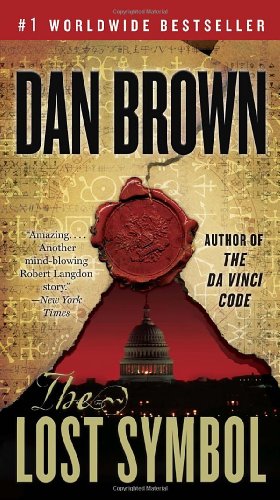All Nonfiction
- Bullying
- Books
- Academic
- Author Interviews
- Celebrity interviews
- College Articles
- College Essays
- Educator of the Year
- Heroes
- Interviews
- Memoir
- Personal Experience
- Sports
- Travel & Culture
All Opinions
- Bullying
- Current Events / Politics
- Discrimination
- Drugs / Alcohol / Smoking
- Entertainment / Celebrities
- Environment
- Love / Relationships
- Movies / Music / TV
- Pop Culture / Trends
- School / College
- Social Issues / Civics
- Spirituality / Religion
- Sports / Hobbies
All Hot Topics
- Bullying
- Community Service
- Environment
- Health
- Letters to the Editor
- Pride & Prejudice
- What Matters
- Back
Summer Guide
- Program Links
- Program Reviews
- Back
College Guide
- College Links
- College Reviews
- College Essays
- College Articles
- Back
The Lost Symbol by Dan Brown
Twist and Turn
“No stone is left unturned” in Dan Brown’s 2009 novel The Lost Symbol (Brown,11). Robert Langdon takes the lead, once again, in compelling readers to follow him into the intense and surreal stories created by this bestselling author. Although The Lost Symbol is Dan Brown’s third novel involving Professor Langdon and his findings, Brown continues to keep his readers tuned in to his plot-twisting, extraordinarily written, and almost eerily graphic stories. The Lost Symbol does not disappoint.
Finding unbelievable clues in classic masterpieces and desperately searching through numerous Catholic churches seem almost calm compared to Brown’s third addition in the Langdon series, The Lost Symbol. Set in Washington D.C., Brown’s beloved character, Robert Langdon, takes us on a mind-blowing adventure trying to protect the Ancient Mysteries of the Freemasons. While fiercely fighting to protect the secrets of this brotherhood, Langdon continues to find information seemingly leading him no where. Despite his greatest efforts, chaos continues to manifest. Just when readers are certain of one plan of action, Brown takes his audience off-guard with another of his well-known plot twists. Be it hiding on a conveyor belt to wandering along on a carpet in the dark, Dan Brown brings incredible creativity into his work.
A creative plot is not the only thing that Dan Brown brings to his novels. By expertly characterizing the parts in this book, as well as his others, Brown makes his readers feel a part of the action. Even if you have not read The DaVinci Code or Angels and Demons (which are highly recommended as well) you will be instantly in love with Robert Langdon, and will be rooting for him right away. By using such amazing depth in his description of time, place, and character, Brown makes the reader feel as if he or she could be Langdon’s sidekick, experiencing every twist and turn right along with him. However, Robert Langdon is not the only character the reader will relate to. Dan Brown has a way of making even Mal’akh (the intensely intimidating antagonist) seem genuine. Although the plot scheme seems nearly impossible (definitely not probable), Brown makes his readers feel what he writes, and you will be sitting on the edge of your comfy chair to see what Brown will throw at his characters next.
Throughout The Lost Symbol, Dan Brown uses astounding imagery to describe every individual scene he creates. In a place like Washington D.C., a place where many of his readers have actually travelled to, it seems as though it would be difficult to achieve the level of mysticism and wonder that Brown brings into this story. However, although the setting is a familiar place, you will find yourself in a completely different world as you follow Langdon in trying to protect this ancient secret. Whether the story takes us into the undergrounds of the Capitol building or the dark expanses of the Smithsonian Museum Support Center, every detail is described vividly, making it feel strangely like reality.
From fear of being found in the dark, to anxiety of traveling in small enclosed spaces, to staring in disbelief at an ancient ‘myth’, Brown has a way of bringing his readers directly into his work. Though the story is fiction, it will seem like reality as you flip each page, with a fervent desire to find out what will happen in the next chapter. Brown keeps his readers guessing as each chapter jumps to a new setting, bringing with it an entirely unexpected twist. Enjoyed by millions of readers, The Lost Symbol is yet another Dan Brown novel that you just can’t put down.
Similar Articles
JOIN THE DISCUSSION
This article has 0 comments.

